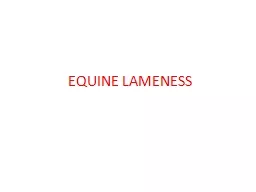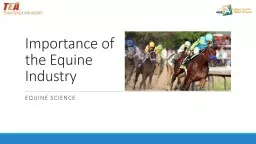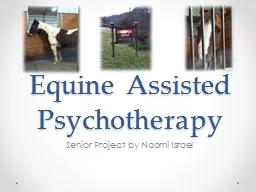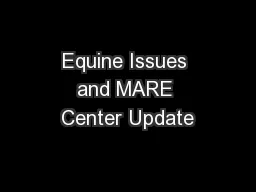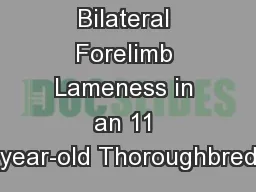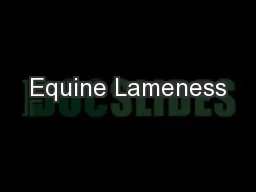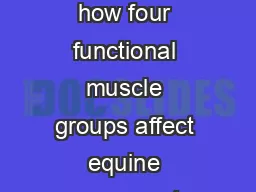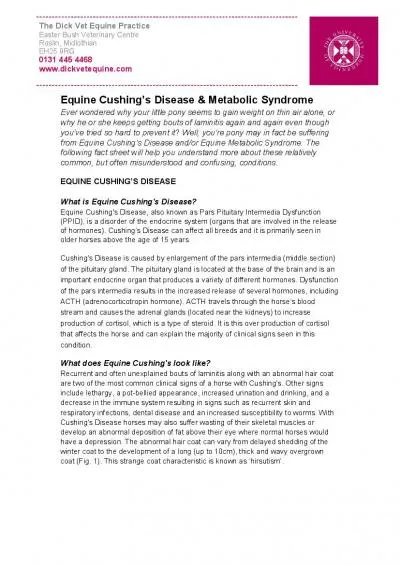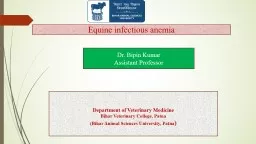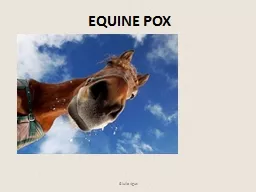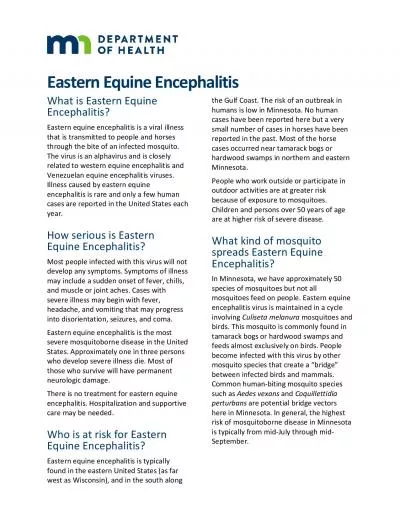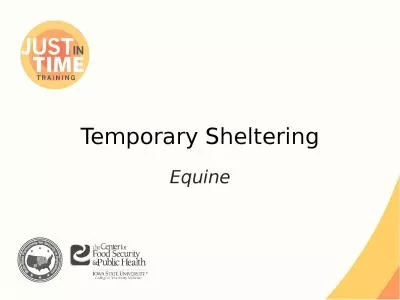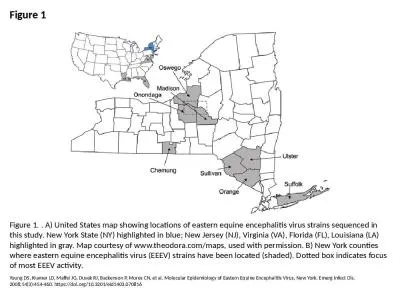PPT-EQUINE LAMENESS
Author : luanne-stotts | Published Date : 2017-05-11
LAMENESS General Signs Head bobbing dropping hip pointing strong digital pulse LAMENESS Predisposing factors Immaturity for hard work racing 2year olds Faulty conformation
Presentation Embed Code
Download Presentation
Download Presentation The PPT/PDF document "EQUINE LAMENESS" is the property of its rightful owner. Permission is granted to download and print the materials on this website for personal, non-commercial use only, and to display it on your personal computer provided you do not modify the materials and that you retain all copyright notices contained in the materials. By downloading content from our website, you accept the terms of this agreement.
EQUINE LAMENESS: Transcript
Download Rules Of Document
"EQUINE LAMENESS"The content belongs to its owner. You may download and print it for personal use, without modification, and keep all copyright notices. By downloading, you agree to these terms.
Related Documents

